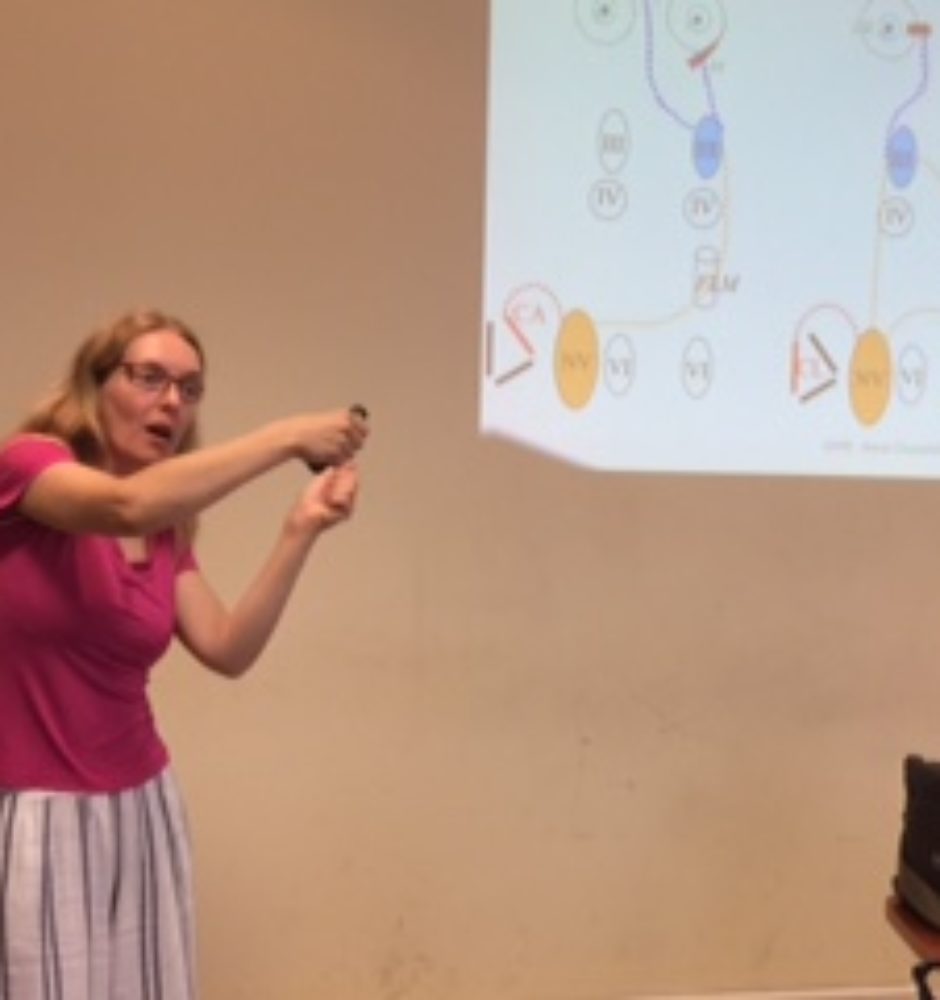Conférence à la Cité des Science (16 Mars à 19h) “Quand nos émotions donnent le vertige”
A l’occasion de la Semaine du Cerveau, Stéphane Besnard et Quentin Montardy, membres...

For balance as for hearing, the neurosensory organ is not a simple sensor. Its physical characteristics are finely modulated and adaptable, they intervene in the regulation of the vestibular system from the periphery.
The regulation of endolymphatic pressure (to speak only of this single parameter among all those involved in the genesis of ciliary movement perceived as a vestibular stimulus), its evolution and its adaptation in different environmental and personal conditions remain poorly understood, and yet involved in so-called “peripheral” vertigo which is the daily lot of emergencies and medical consultations.
Arnaud ATTYE (neuroradiologue, CHU de Grenoble, France)
Daniel BAUMGARTNER (chercheur en physique mécanique, laboratoire ICUBE Strasbourg, maître de conférence à l’université de Strasbourg, France)
Adil BOUCHANA (doctorant, université de Fès, Maroc)
Christian CHABBERT (chercheur, directeur de recherche CNRS, Université d’Aix-Marseille, France)
Anne CHARPIOT (ORL, Professeur à l’Université de Strasbourg, France)
Idir DJENNAOUI (ORL, doctorant, Universités de Strasbourg et Clermont-Ferrand)
Michael ELIEZER (radiologue, Hôpital Universitaire Lariboisière, Paris, France)
Maya ELZIERE (ORL, Marseille)
Charlotte HAUTEFORT (ORL,Hôpital Universitaire Lariboisière, Paris, France)
Thierry MOM (ORL, Professeur à l’Université de Clermont-Ferrand)
Thomas RICHARD-VITTON (ORL et entrepreneur, Marignane, France)
Mohammed RIDAL (ORL, Professeur à l’Université de Fès, Maroc)
Sébastien SCHMERBER (ORL, Professeur à l’Université de Grenoble, France)
Francis VEILLON (Radiologue, Professeur à l’université de Strasbourg, France)
The regulatory capacities at the level of the inner ear itself are at the heart of physiological (environmental adaptations, hormones, stress, hydrops? …) and pathological (labyrinthine bleeding, microcrystals, antivertiginous, hydrops? …) .
To understand or even act on the peripheral regulation of the vestibular system and homeostasis of the endolymphatic compartment, the team’s challenges are:
For this, the following skills could be brought together in the team:
Publications:
The dynamics of endolymphatic hydrops and vestibular disorders.
Charpiot A, Fath L, Veillon F, Venkatasamy A, Baumgartner D.
J Vestib Res. 2021 Jan 10.
Systematic review of magnetic resonance imaging for diagnosis of Meniere disease.
Lopez-Escamez JA, Attyé A.
J Vestib Res. 2019;29(2-3):121-129.
Three-dimensional culture of newborn rat utricle using an extracellular matrix promotes formation of a cyst.
Gaboyard S, Chabbert C, Travo C, Bancel F, Lehouelleur J, Yamauchi D, Marcus DC, Sans A.
Neuroscience. 2005;133(1):253-65.
Principles of vestibular pharmacotherapy.
Chabbert C.
Handb Clin Neurol. 2016;137:207-18.
MRI IDENTIFICATION OF THE SACCULE? DO IT YOURSELF!
Attyé A, Eliezer M.
Otol Neurotol. 2018 Sep;39(8):1070-1071.
Meniere’s attack – a volume or pressure phenomenon?
Djennaoui I, Avan P.
J Vestib Res. 2020 Dec 25.
Post-traumatic balance disorder.
Elzière M, Devèze A, Bartoli C, Levy G.
Eur Ann Otorhinolaryngol Head Neck Dis. 2017 May;134(3):171-175.
Detection of intralabyrinthine abnormalities using post-contrast delayed 3D-FLAIR MRI sequences in patients with acute vestibular syndrome.
Eliezer M, Maquet C, Horion J, Gillibert A, Toupet M, Bolognini B, Magne N, Kahn L, Hautefort C, Attyé A.
Eur Radiol. 2019 Jun;29(6):2760-2769.Measurement of endolymphatic pressure.
Mom T, Pavier Y, Giraudet F, Gilain L, Avan P.
Eur Ann Otorhinolaryngol Head Neck Dis. 2015 Apr;132(2):81-4.
Does benign paroxysmal positional vertigo explain age and gender variation in patients with vertigo by mechanical assistance maneuvers?
Wang J, Chi FL, Jia XH, Tian L, Richard-Vitton T.
Neurol Sci. 2014 Nov;35(11):1731-6.
Relationship Between Audio-Vestibular Functional Tests and Inner Ear MRI in Meniere’s Disease.
Quatre R, Attyé A, Karkas A, Job A, Dumas G, Schmerber S.
Ear Hear. 2019 Jan/Feb;40(1):168-176.

A l’occasion de la Semaine du Cerveau, Stéphane Besnard et Quentin Montardy, membres...
